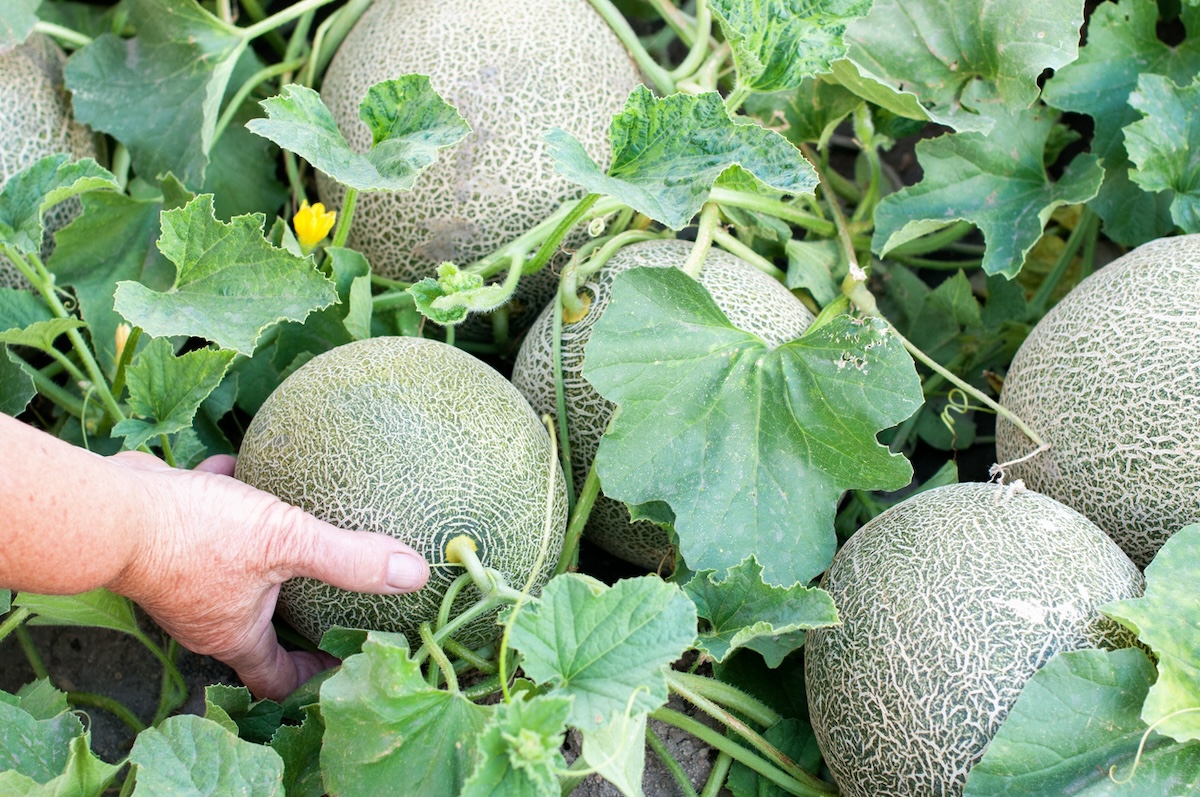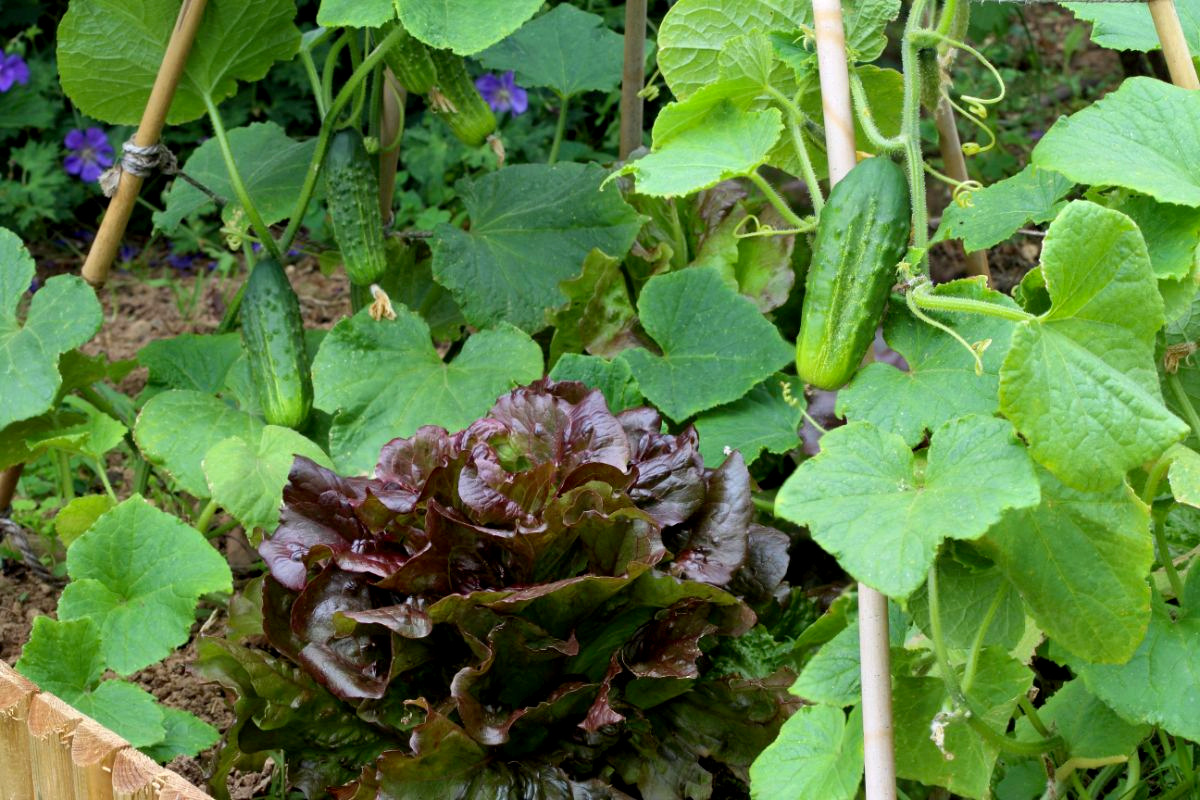

We may earn revenue from the products available on this page and participate in affiliate programs. Learn More ›
If an abundant harvest is the goal, companion planting is the secret weapon any gardener can use. Companion planting helps reduce pests and disease while maximizing space and crop yield. When deciding what grows well with cucumbers (Cucumis sativus), gardeners can think about both the current crop as well as a long-term design with perennial companion plants.
“When considering companion plants, think biodiversity,” says Sara Abbass, owner of Sara Mairead Landscape Design, a Newport, NY-based landscaping company with a focus on sustainability and native plants. “When selecting the fruits and veggies for your kitchen garden, take the next step to consider native plants that will overlap in blooms late into the fall season.“ Among her favorites, Abbass recommends perennials like purple coneflower (Echinacea sp.) and butterfly weed (Asclepias tuberosa) to add to the permanent diversity of the garden.
Along with native plants, there are plenty of annual flowers and veggies that make perfect companion plants for cucumbers.
Cucumber Companions: Pests, Disease, Beneficial Insects
Cucumbers are prone to several pests and diseases, including aphids, squash bugs, and cucumber beetles as well as fungal and viral diseases. Certain companion plants for cucumbers can help by repelling pests and also by attracting beneficial insects that will prey on the pests that damage plants.
Radish (Raphanus sativus)
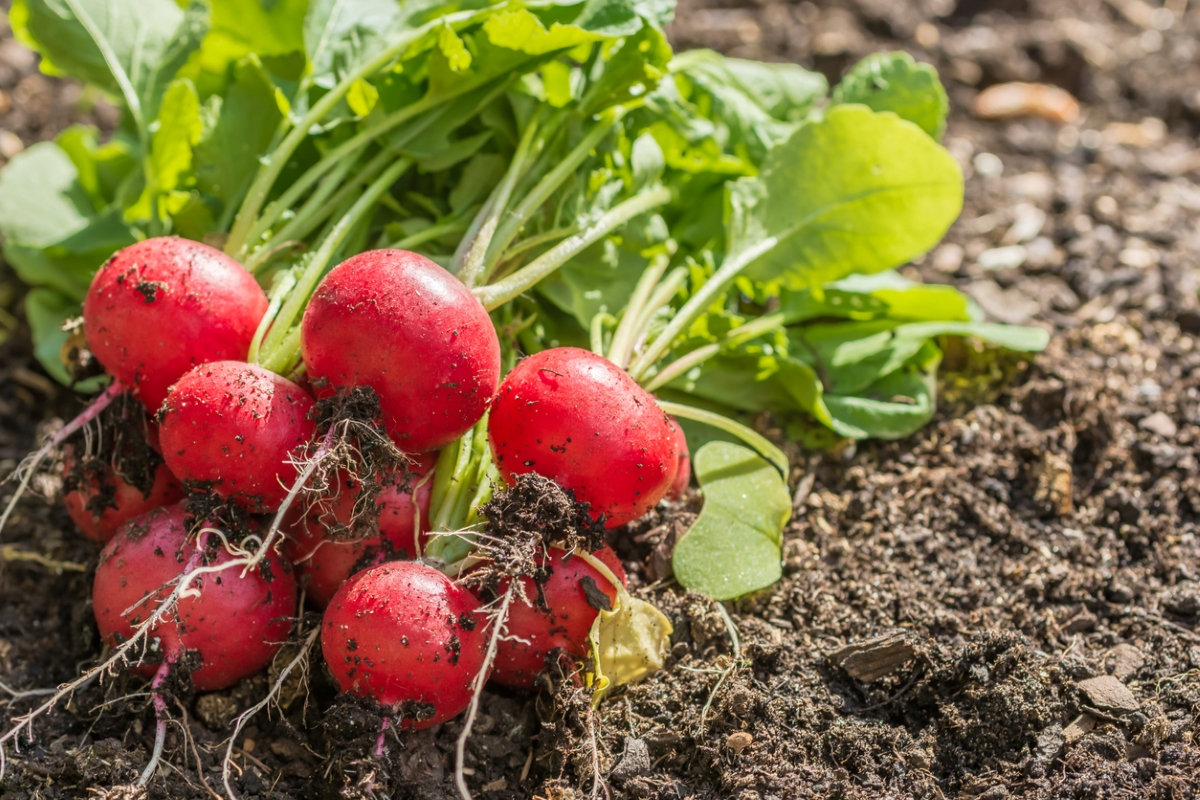
Radishes make excellent cucumber companion plants as they can help deter the dreaded cucumber beetle. For every cucumber planted, sow a few radish seeds at the base. Do not harvest them. Let them grow as long as possible, including going to flower. Because radish seeds germinate quickly, once the radishes start to look scraggly pull them and replant.
Best For: Deterring cucumber beetles
Our Recommendation: Get Cherry Belle radishes at Burpee for $5.95 (1000 organic seeds)
Marigold (Tagetes spp.)
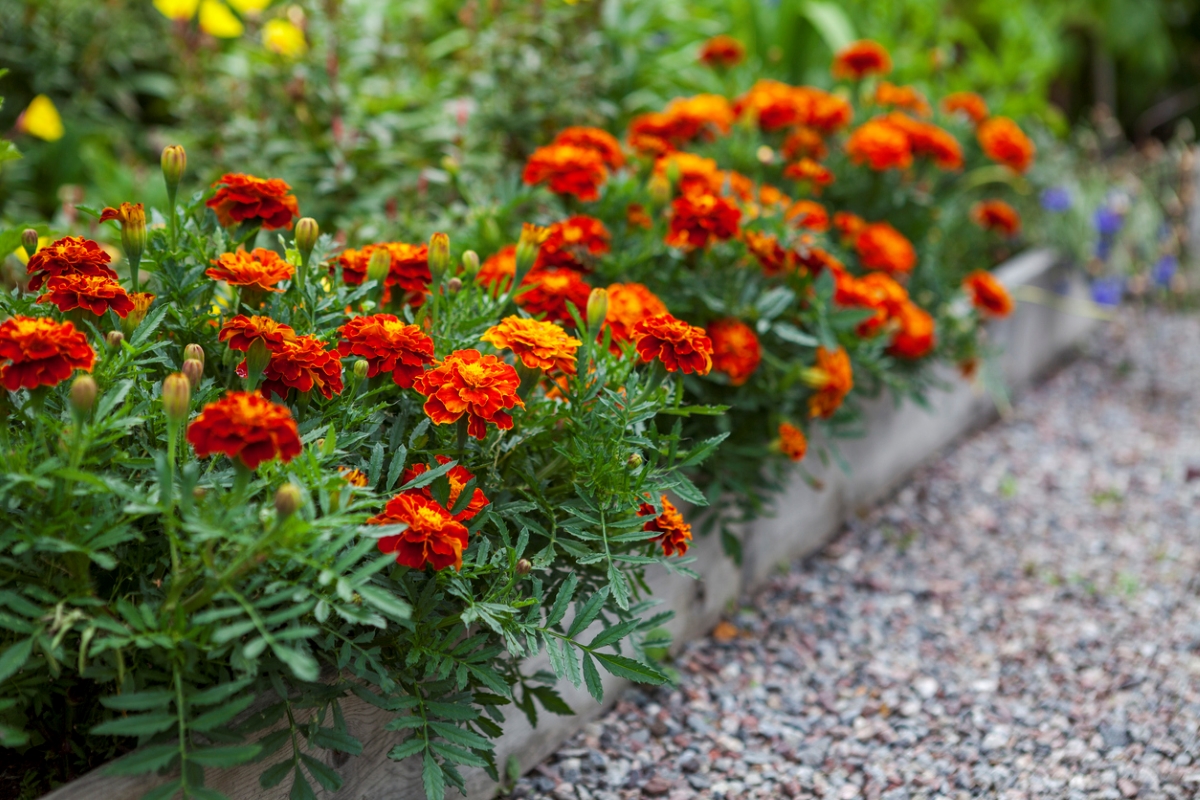
Not only do they look beautiful, but marigold flowers are also a source of pyrethrins, a natural insect repellent. Planting marigolds as companion plants for cucumbers will help repel pests such as aphids, spider mites, and cucumber beetles. Additionally, they attract beneficial insects including pollinators that support the health of the garden and dine on any errant aphids and spider mites.
Start marigolds ahead of time by planting indoors, so they are ready to set out from the start of cucumber season.
Best For: Repelling pests that damage cucumbers and attract beneficial insects
Our Recommendation: Get Queen Sophia marigolds at Burpee for $4.95 (100 seeds)
Sweet Alyssum (Loublaria maritima)
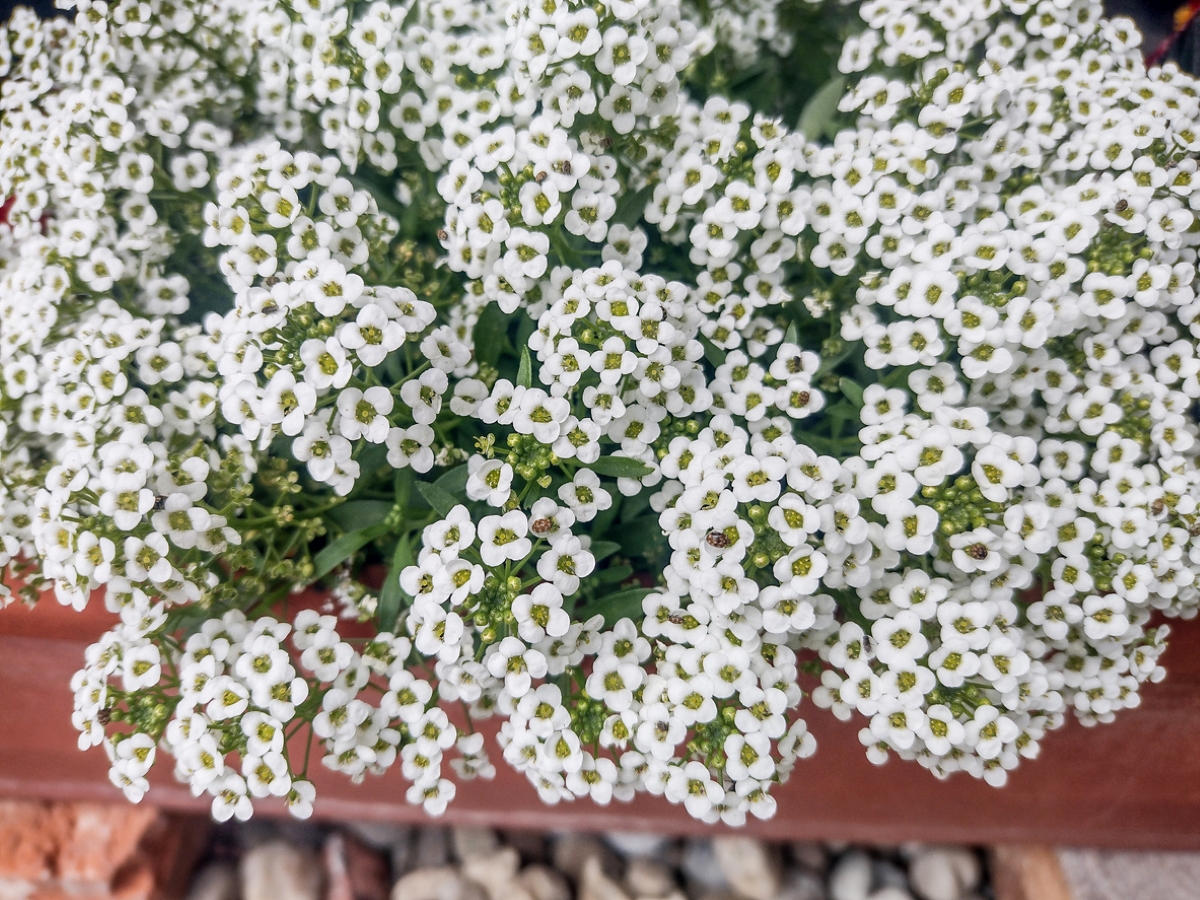
This low-growing flowering plant has a pleasant smell and can be planted in pots or borders. The roots are shallow, so they won’t compete with cucumbers for water or space. Best of all, alyssum attracts beneficial insects including ladybugs who feast on aphids.
All of these reasons, combined with attractive appearance and long bloom season, make alyssum an excellent companion plant for cucumbers.
Best For: Attracting beneficial insects, especially ladybugs
Our Recommendation: Get Outside sweet alyssum seeds at Amazon for $7.49
Nasturtium (Tropaeolum majus)
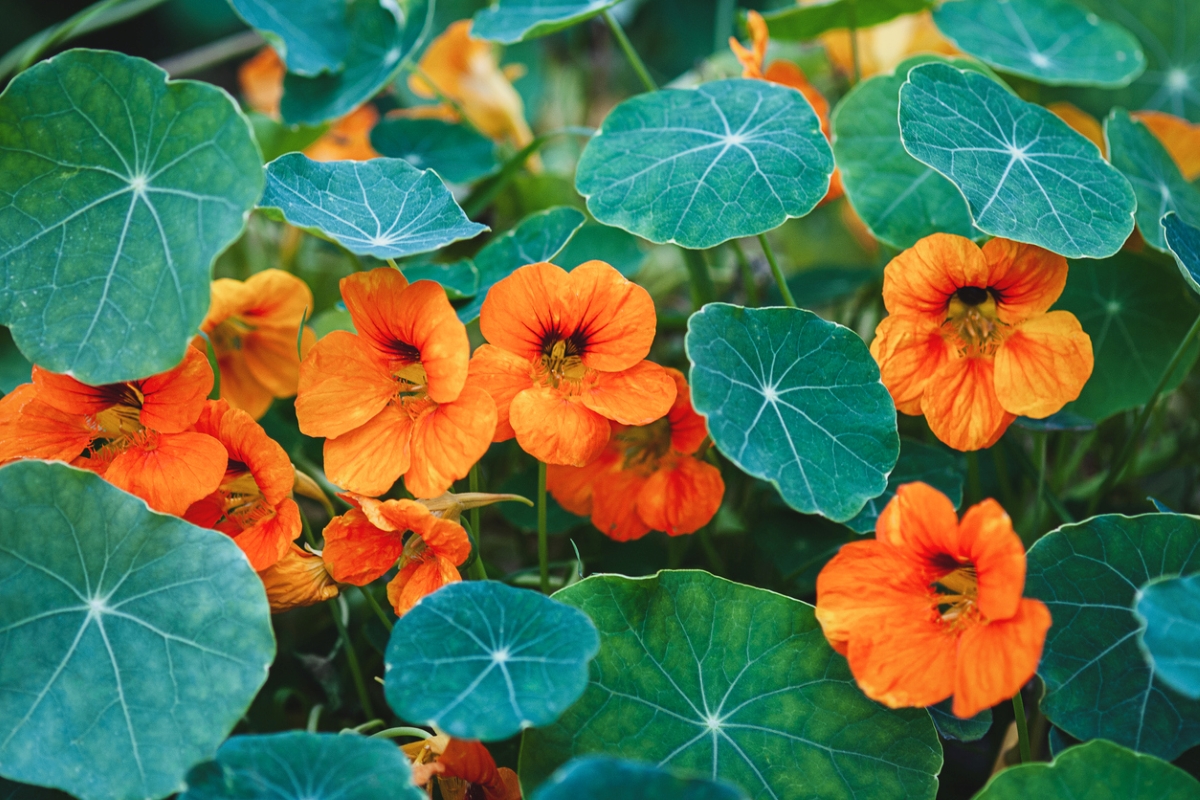
Nasturtium ward off several pests, including squash bugs, making them ideal for companion planting with cucumbers. They produce a sweet nectar that attracts pollinators and beneficial insects. In fact, according to the University of Delaware Department of Agriculture & Natural Resources, syrphids, also known as hover flies, feed on nectar. Syrphids lay eggs on nearby leaves, which hatch into larvae that feed on aphids.
Best For: Attracting beneficial insects including syrphid and repelling pests such as squash bugs
Our Recommendation: Get Alaska Mix nasturtiums at Burpee for $8.95 (125 heirloom seeds)
Chives (Allium schoenoprasum)
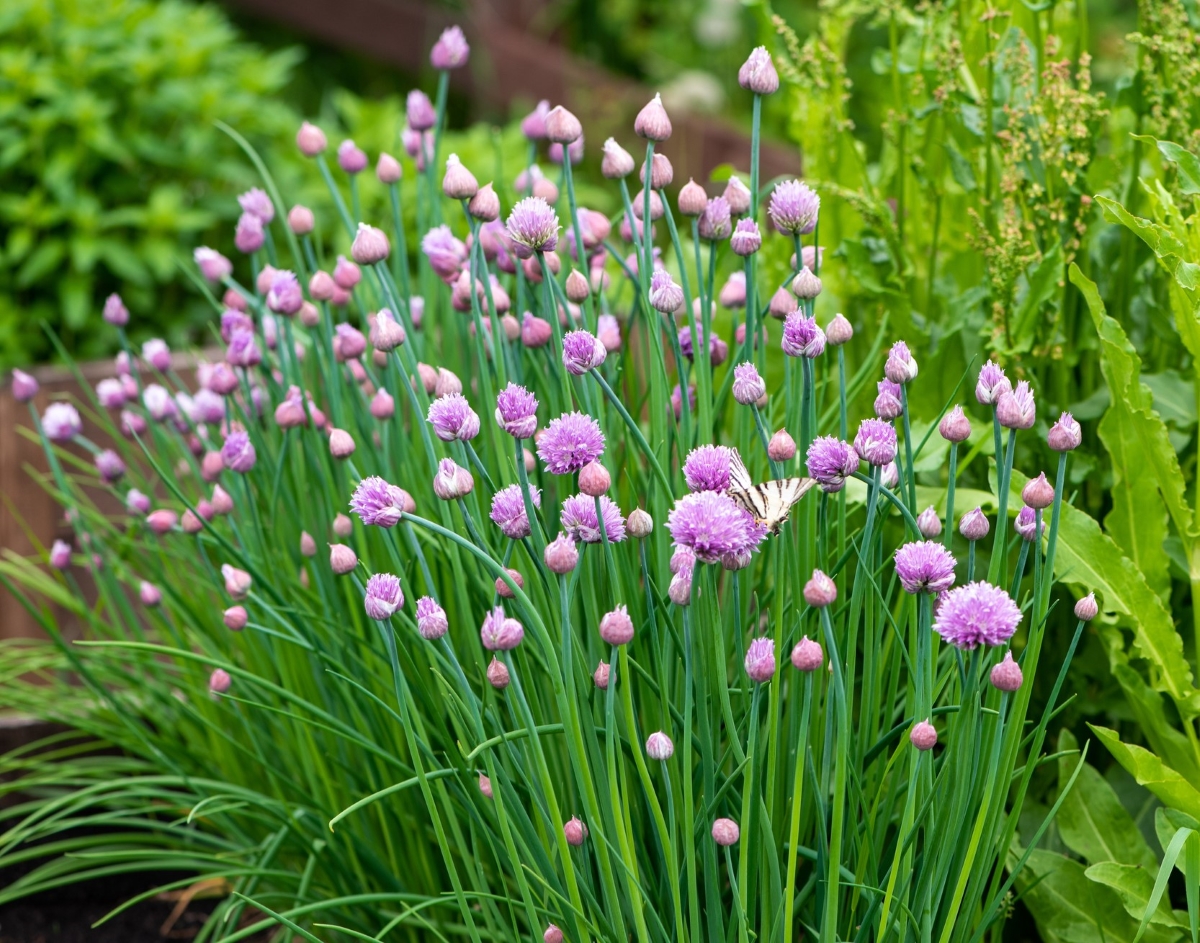
Chives make a nice companion plant for cucumbers because they ward off pests and explode into beautiful, round pink flowers that attract bees and other pollinators. In her book Carrots Love Tomatoes, author Louise Riotte recommends a chive spray to help control downy mildew on cucumbers. Grow onion chives, or try garlic chives.
Best For: Repelling pests and attracting pollinators
Our Recommendation: Get Dolores chives at Burpee for $4.45 (1000 seeds)
Cucumber Companions: Soil Structure, Nutrients, Flavor
“Planting your cucumbers in full sun, moist, fertile soil that’s at least 60 degrees Fahrenheit, and leaving plenty of space for the vines to grow will help your cucumbers thrive,” says Rebecca Sears, CMO and resident green thumb at Ferry-Morse. “Be sure to watch the weeds [around] your cucumber plant as well, keeping them to a minimum with consistent hand-pulling.”
Cucumbers thrive in well-draining soil, so companion planting for cucumbers can include those that help break up soil. While fertilizing cucumbers is essential for good crop growth, some plants naturally help bring nutrients to the soil. Nitrogen-fixing plants, like those in the legume family, make great companion plantings for cucumbers.
Sugar Snap Peas (Pisum sativum var. macrocarpon)
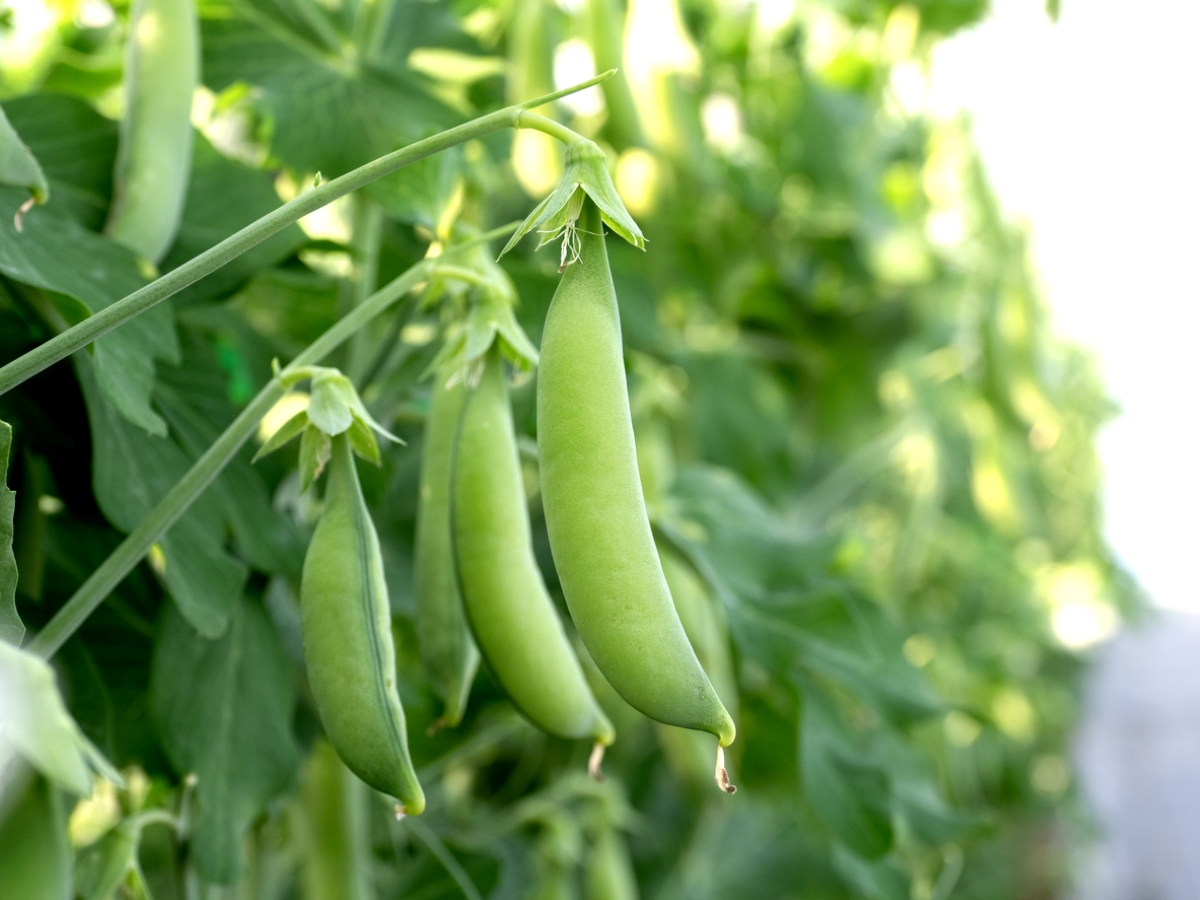
Peas are nitrogen-fixing. They prefer cooler weather, so plant peas in early spring. Sugar snap peas grow fast, so in many gardens, they can be planted before cucumbers.
Like cucumbers, peas are non-structured so they require some form of trellis to grow on. Both are susceptible to powdery mildew, so air circulation is key to making this relationship work.
Best For: Increasing nitrogen in the soil
Our Recommendation: Get Cascadia sugar snap peas at Ferry-Morse for $6.29 (57+ organic seeds)
Bush Beans (Phaseolus vulgaris)
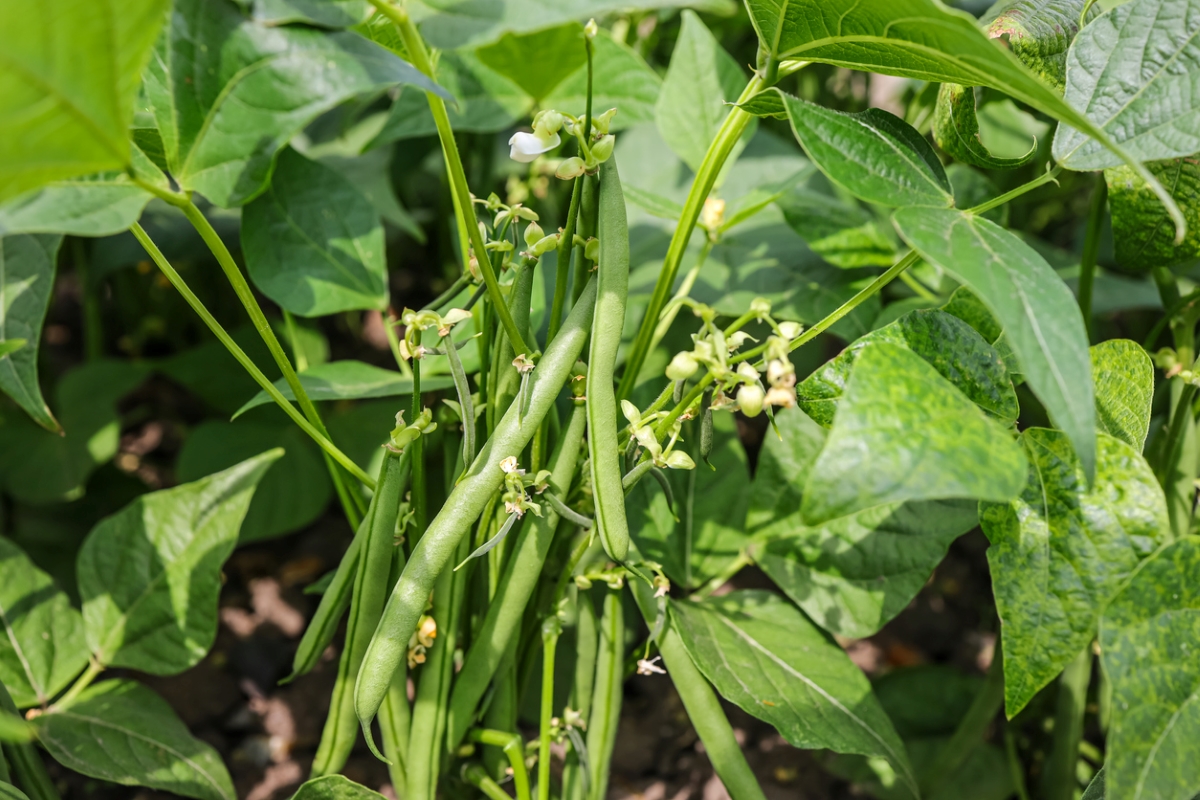
Like peas, these veggies help improve the soil with their nitrogen-fixing. Unlike peas and pole beans, bush beans don’t vine or require a trellis. Cucumbers will want to wind around the bush beans but they are likely not strong enough to support the full weight of a large cucumber vine.
Best For: Adding nutrients to the soil
Our Recommendation: Get Blue Lake bush beans at Ferry-Morse for $6.29 (10-20 seeds)
Edamame, Soybeans (Glycine max)
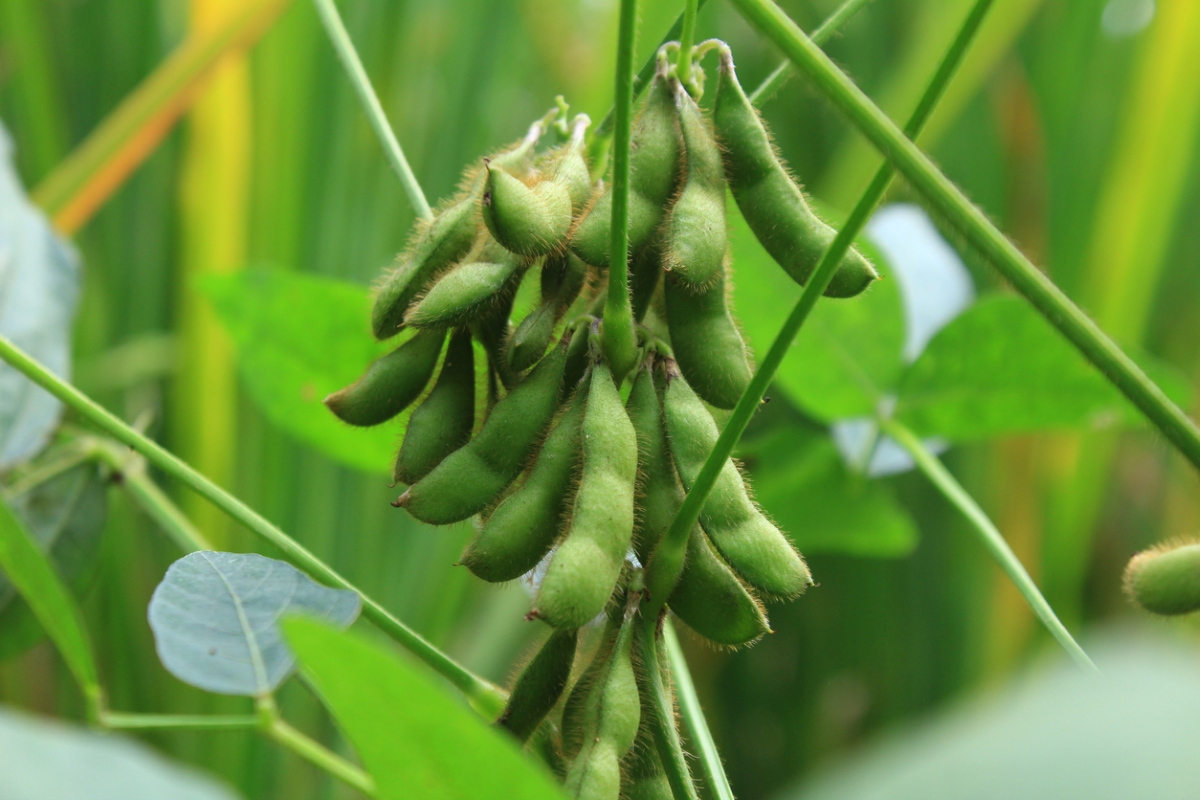
When deciding what to plant with cucumbers, edamame makes a great choice because they not only bring nitrogen to the soil like their pea and bean cousins, but they grow more like bush beans so they can be planted in alternating rows next to cucumbers. Edamame will need to be harvested sooner than cucumbers but overall make for great cucumber companions.
Best For: Boosting available nitrogen in the soil
Our Recommendation: Get Midori Star edamame at Park Seed for $7.95 (50 seeds)
Beets (Beta vulgaris)
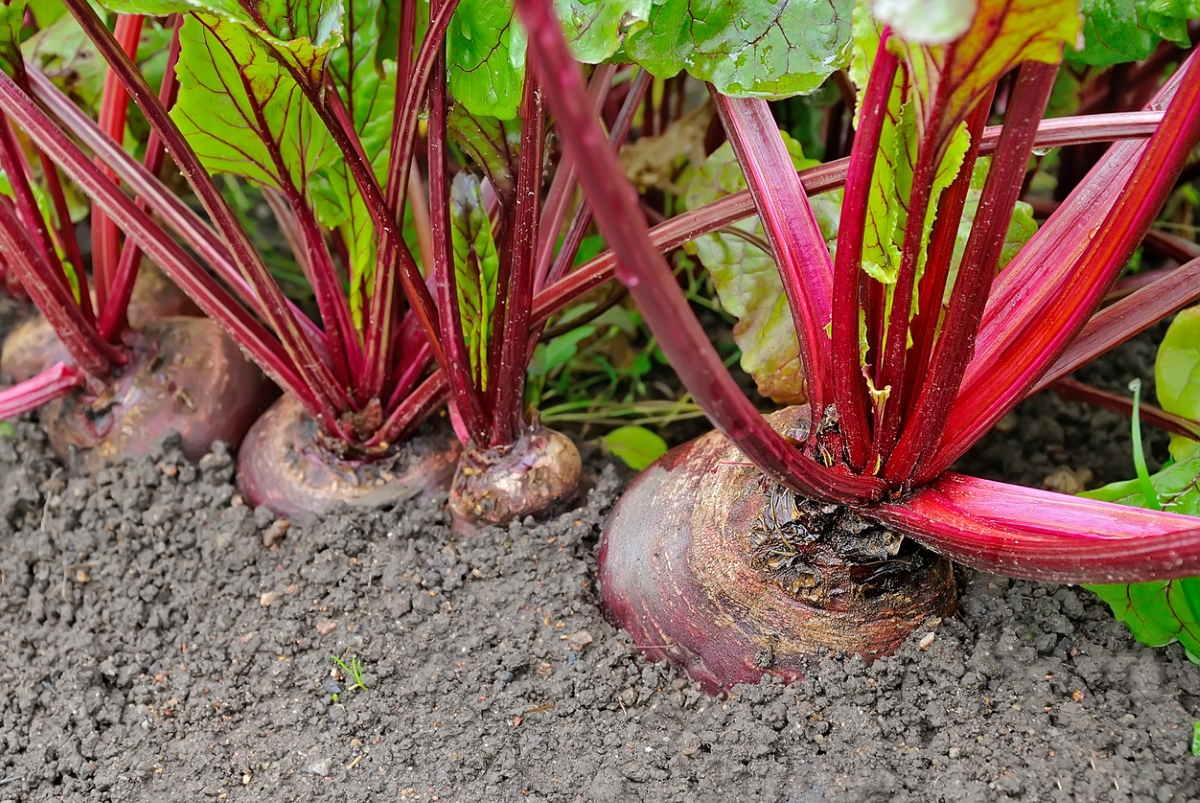
Beets are hardy root vegetables that are notorious for growing in rocky soil, so they actually can be used to help keep the soil aerated by breaking it up. They can be planted in early spring and again in late fall as cool-season vegetables, continuously breaking up the soil while also not competing with the space or nutrients cucumbers need.
Best For: Helps break up and loosen the soil
Our Recommendation: Get Detroit Dark Red Medium Top beet seeds at Burpee $3.95 (1000 heirloom seeds)
Dill (Anethum graveolens)
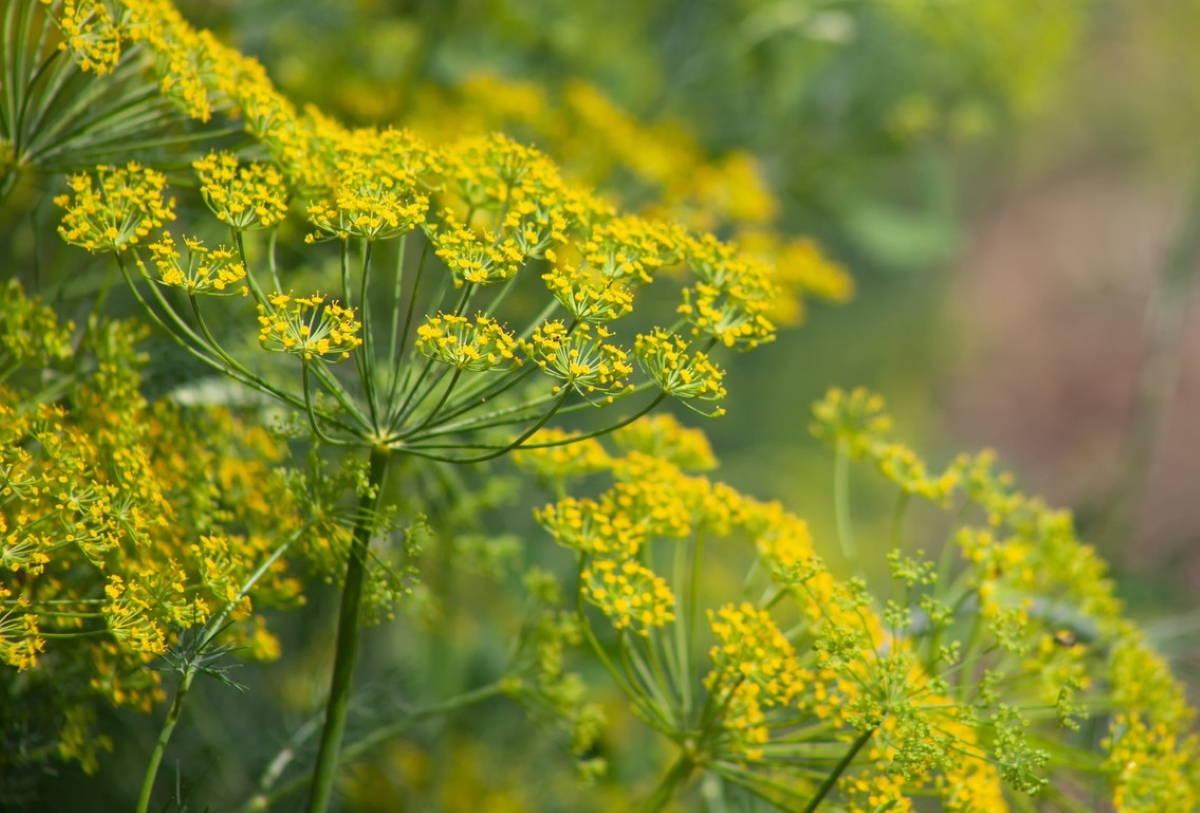
On the list of companion plants for cucumbers, there aren’t many outdoor herbs and spices, because many gardeners believe that strong herbs like rosemary can affect the flavor of cukes. Dill is an exception, as some believe it brings a nice flavor to the crisp cucumber. It certainly goes well in the pickling process and has the added bonus of attracting beneficial insects and pollinators to the garden thanks to its large inflorescence, including hoverflies (a type of bee) whose larvae eat up aphids.
Best For: Flavor and attracting beneficial insects
Our Recommendation: Get Mammoth organic dill at Ferry-Morse for $6.29 (1100+ seeds)
Cucumber Companions: Space, Conditions, Growth Habit
Companion plants for cucumbers can include cool-season vegetables with short growth habits that will be harvested before cucumbers take off. Others can grow in the shade of cucumber vines without competing for space, while others are ideal for supporting cucumber plants as they grow.
Sunflower (Helianthus annuus)
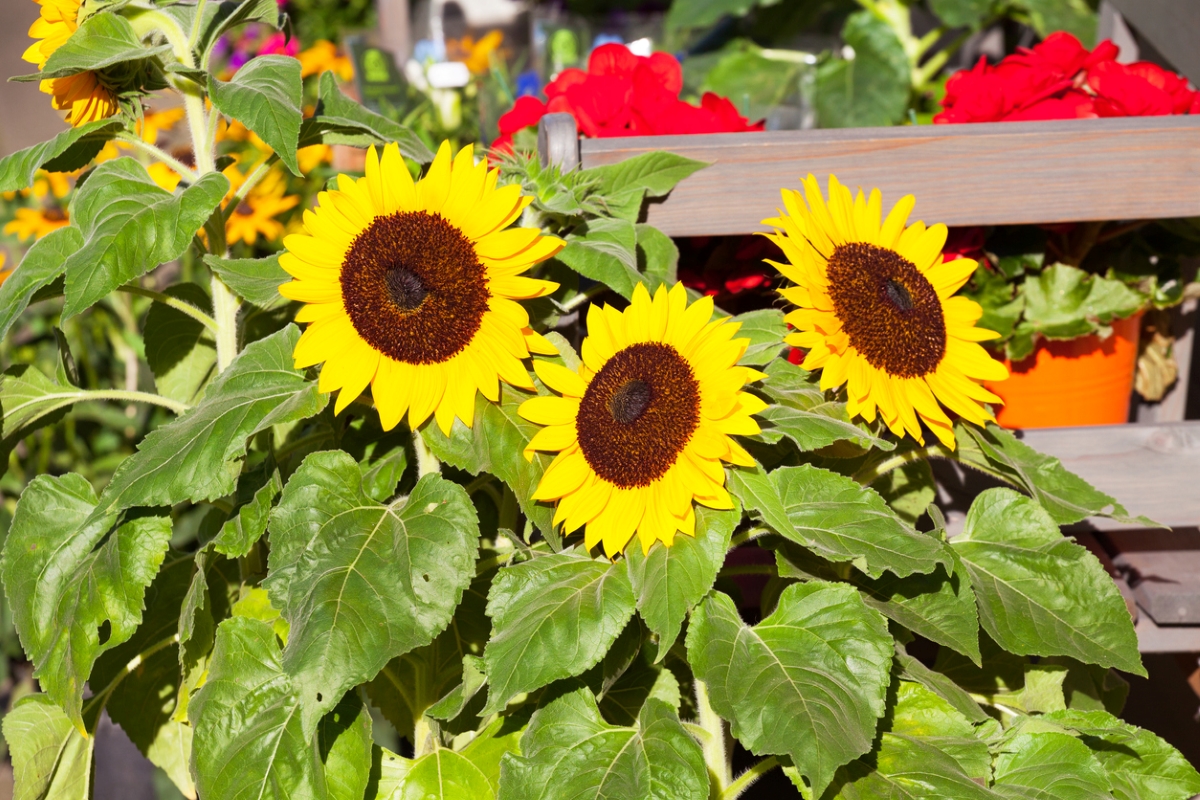
Allelopathic sunflowers make an excellent companion plant for cucumber vines because their tall, strong stalks provide natural support for cucumber vines. A good rule of thumb is to plant a smaller variety of cucumber, like a pickling cuke, and wait to plant the seeds until the sunflowers have already reached at least 1 foot in height.
Best For: Supporting cucumber plants
Our Recommendation: Get American Giant hybrid sunflowers at Ferry-Morse for $4.99 (12+ seeds)
Corn (Zea mays)
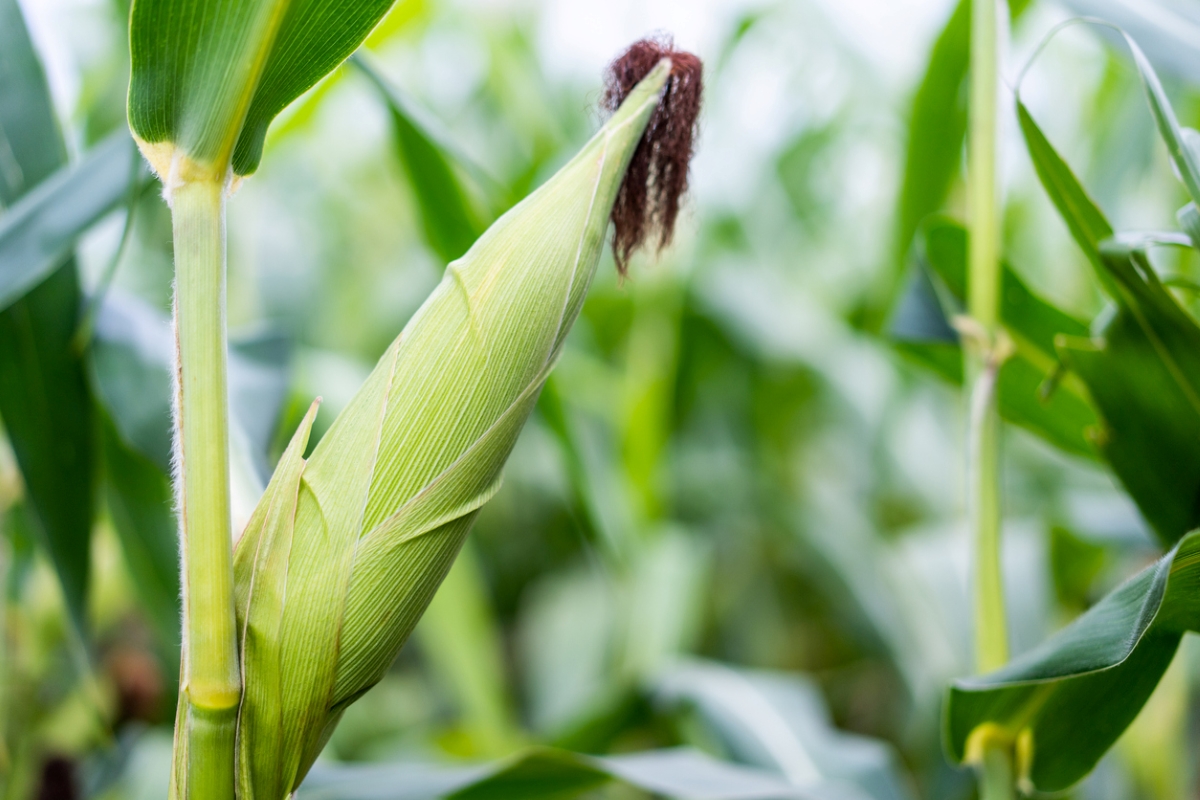
Similar to sunflowers, corn can be used for supporting cucumber plants as they grow. Wait until the corn has grown about 6 inches before planting cucumber seeds, giving the corn a head start. It is also wise to choose a smaller cucumber variety to avoid pulling corn over with the weight of the mature fruit.
Best For: Providing a living trellis for cucumber plants
Our Recommendation: Get On Deck hybrid corn at Burpee for $6.95 (50 seeds)
Lettuce (Lactuca sativa)
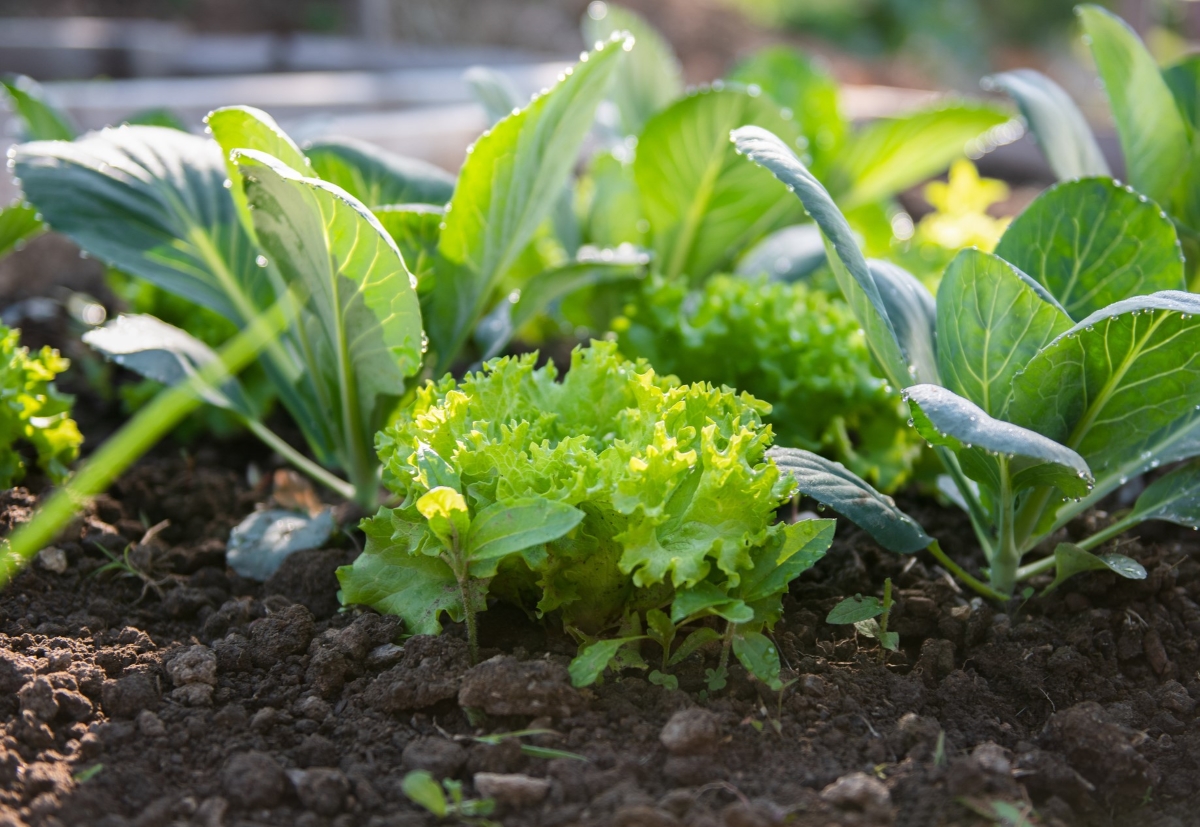
Leafy greens like lettuce prefer cooler weather, often bolting in the heat of summer, but cucumber companion planting can help lettuce thrive in summer heat.
“I suggest growing cucumbers on an angled trellis and planting lettuce underneath, as the lettuce will enjoy the afternoon shade that the cucumber vines provide,” says Sears. The lettuce won’t compete with cucumber for space, so they’ll have plenty of room to sprawl on the trellis.
Best For: Growing in the shade of cucumber vines, using space in the garden
Our Recommendation: Get Parris Island lettuce at Ferry-Morse for $6.29 (500+ organic seeds)
Spinach (Spinacia oleracea)
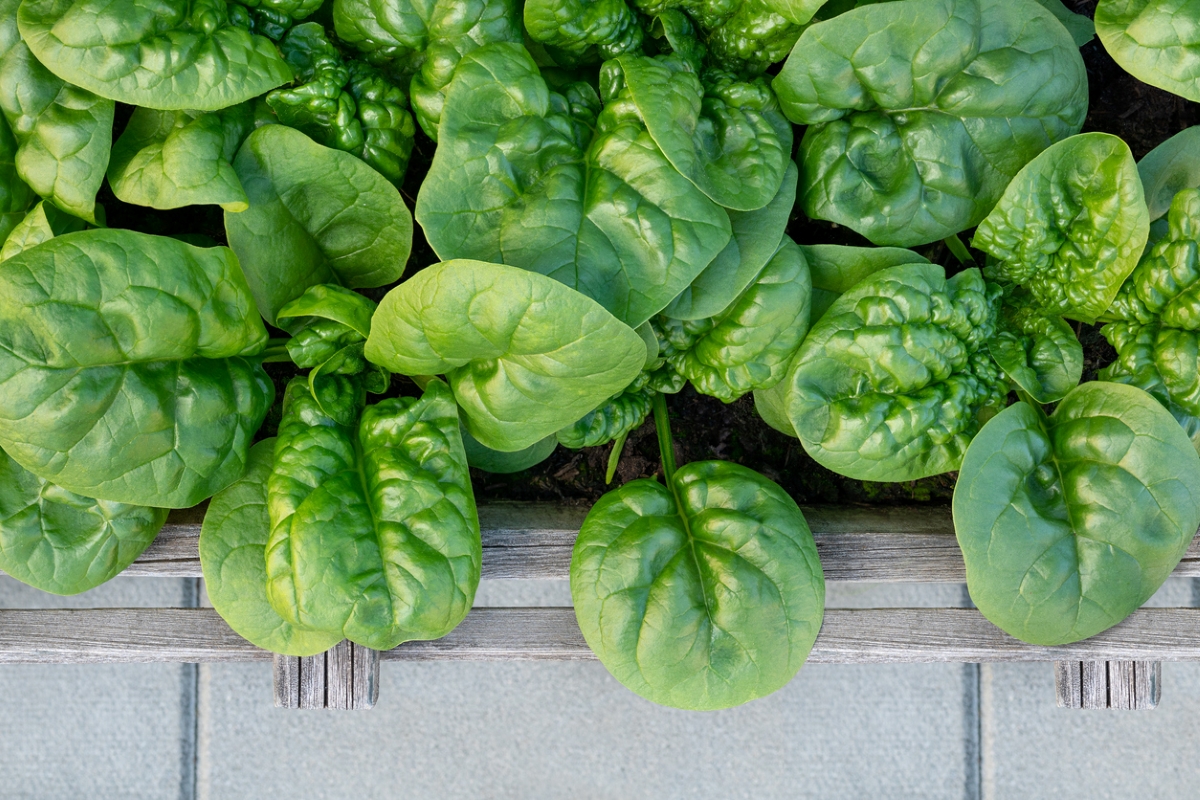
Spinach is similar to lettuce in that it prefers cool weather, as it bolts quickly in hot weather. While spinach can be grown in early spring, it can also be planted in the fall after cucumber harvest. Varieties like ‘Oceanside’ are harvestable in less than a month, making it a complementary shoulder season veggie.
Best For: Plant after cucumber harvest to utilize garden space before winter
Our Recommendation: Get Bloomside Long-standing spinach at Burpee for $4.95 (1000 heirloom seeds)
Carrot (Daucus carota)
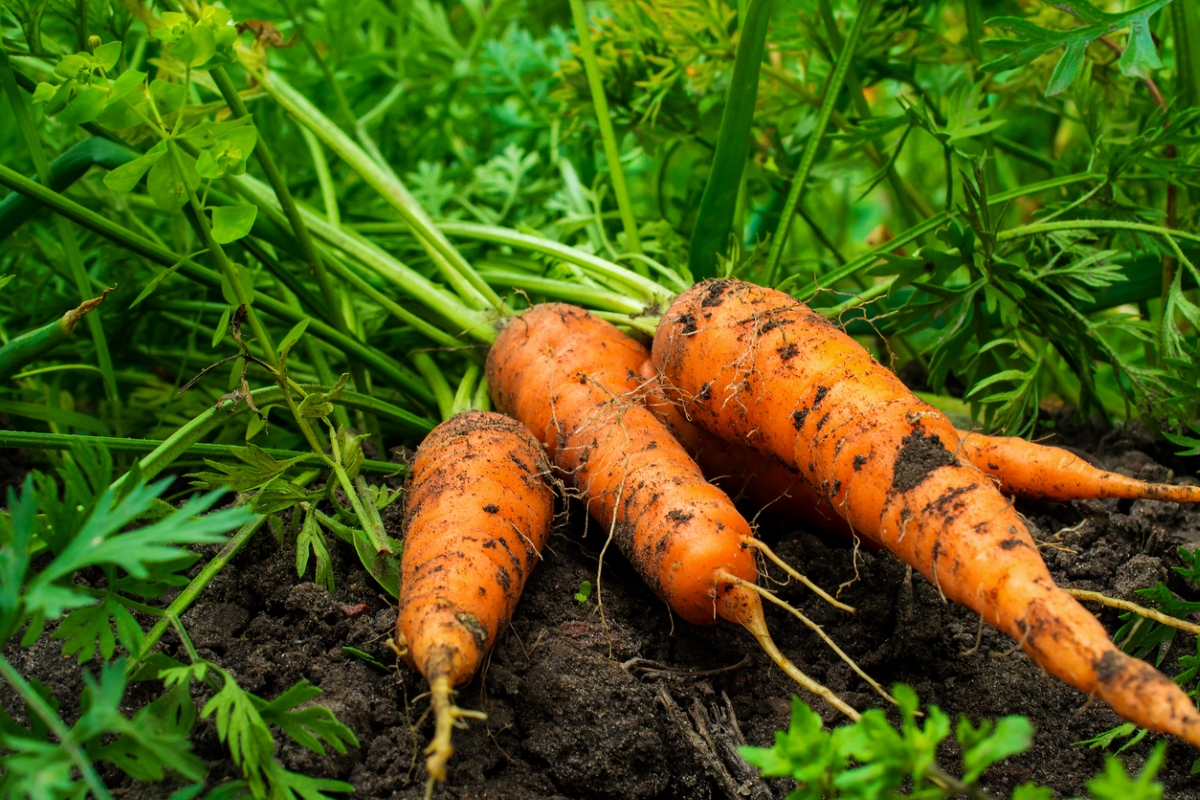
Although carrots don’t necessarily bring nutrients to the soil like legumes, they may help keep the soil permeable, similar to beets. Carrots are also a cool season crop and grow from seed to harvestable root in 2 to 3 months, meaning they can utilize space in the garden before or while cucumber seeds are sown and then be harvested before cucumbers need the space.
Best For: Won’t compete with cucumbers for garden space, can help keep soil permeable
Our Recommendation: Get Red Cored Chantenay carrots at Ferry-Morse for $6.29 (600+ organic seeds)
5 Plants to Never Grow Near Cucumbers
While there are a number of great options for happy cucumber companion plants, there are a few to avoid. From those that compete for nutrients to those that slow cucumber growth, when deciding what to plant by cucumbers, avoid these five plants.
- Potatoes: Potatoes are tubers and will compete with the long taproot of cucumbers for space and nutrients in the garden, inhibiting the growth of both.
- Brassicas: Brassicas including cabbage, broccoli, cauliflower, and kohlrabi make bad companion plants for cucumbers as they compete with cucumbers for nutrients in the soil and tend to attract pests like aphids and cabbage worms, which can also destroy cucumbers.
- Sage: Though some aromatic plants such as chives and dill do make good cucumber companion plants, many of the other aromatic herbs do not. Gardeners claim culinary sage in particular negatively affects the flavor of cucumbers, making them bitter. One study by the National Library of Medicine found that some salvias can inhibit plant growth.
- Rosemary: Another of the strong aromatic herbs, rosemary has similar issues as with sage and in a similar study, rosemary was found to have plant growth-inhibitory effects.
- Cucurbitas: Melons, squash, and cucumbers are in the same family (Cucurbitaceae) so they are susceptible to the same pests and diseases. One infestation can quickly spread and wipe out all the plants.
The prices listed here are accurate as of publication on February 29, 2024.




